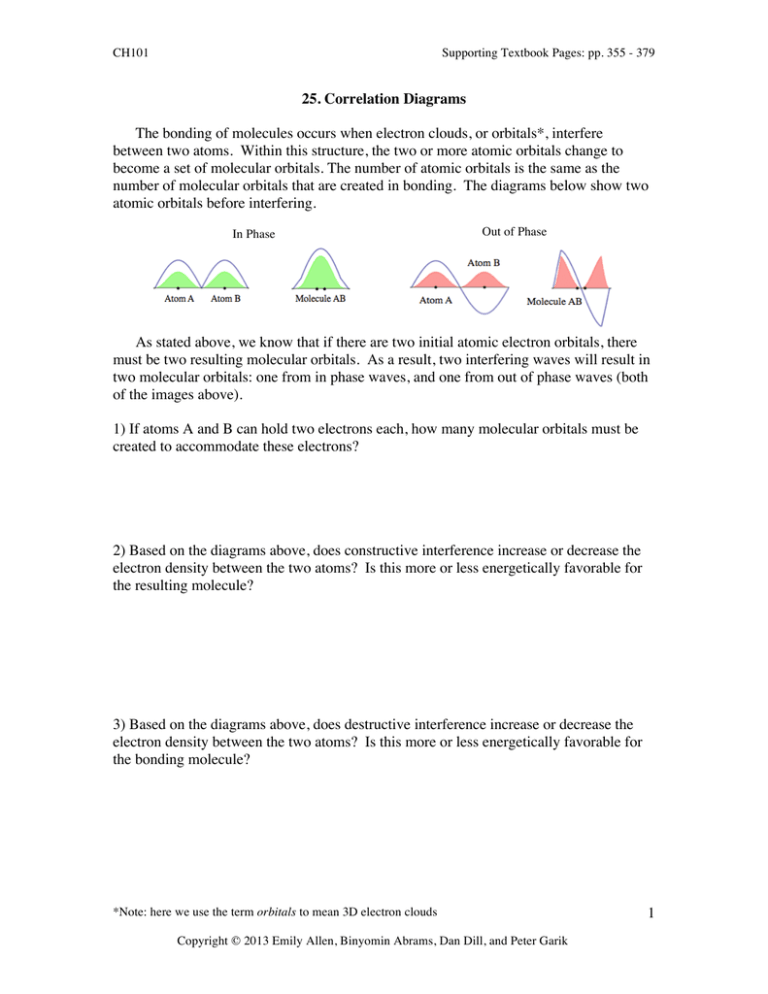The bonding of molecules occurs when electron clouds, or orbitals*,... between two atoms. Within this structure, the two or... 25. Correlation Diagrams
advertisement

CH101 Supporting Textbook Pages: pp. 355 - 379 25. Correlation Diagrams The bonding of molecules occurs when electron clouds, or orbitals*, interfere between two atoms. Within this structure, the two or more atomic orbitals change to become a set of molecular orbitals. The number of atomic orbitals is the same as the number of molecular orbitals that are created in bonding. The diagrams below show two atomic orbitals before interfering. In Phase Out of Phase As stated above, we know that if there are two initial atomic electron orbitals, there must be two resulting molecular orbitals. As a result, two interfering waves will result in two molecular orbitals: one from in phase waves, and one from out of phase waves (both of the images above). 1) If atoms A and B can hold two electrons each, how many molecular orbitals must be created to accommodate these electrons? 2) Based on the diagrams above, does constructive interference increase or decrease the electron density between the two atoms? Is this more or less energetically favorable for the resulting molecule? 3) Based on the diagrams above, does destructive interference increase or decrease the electron density between the two atoms? Is this more or less energetically favorable for the bonding molecule? *Note: here we use the term orbitals to mean 3D electron clouds Copyright © 2013 Emily Allen, Binyomin Abrams, Dan Dill, and Peter Garik 1 CH101 Supporting Textbook Pages: pp. 355 - 379 Correlation diagrams show energy diagrams of the original electron orbitals and the resulting molecular orbitals. The correlation diagram below shows an example of atom A and atom B combining into molecule AB. By including the individual atoms and the molecules on the same diagram the change in energy of the orbitals can be compared. 4) Based on your answers in the previous sections, label the molecule orbital energies in the diagram to the right as either in phase electron wave interference or out of phase electron interference. Explain your choice. 5) Label each of the molecular orbitals as either “bonding” or “anti-bonding”. Explain your answer. *Note: here we use the term orbitals to mean 3D electron clouds Copyright © 2013 Emily Allen, Binyomin Abrams, Dan Dill, and Peter Garik 2




![6) cobalt [Ar] 4s 2 3d 7](http://s2.studylib.net/store/data/009918562_1-1950b3428f2f6bf78209e86f923b4abf-300x300.png)
